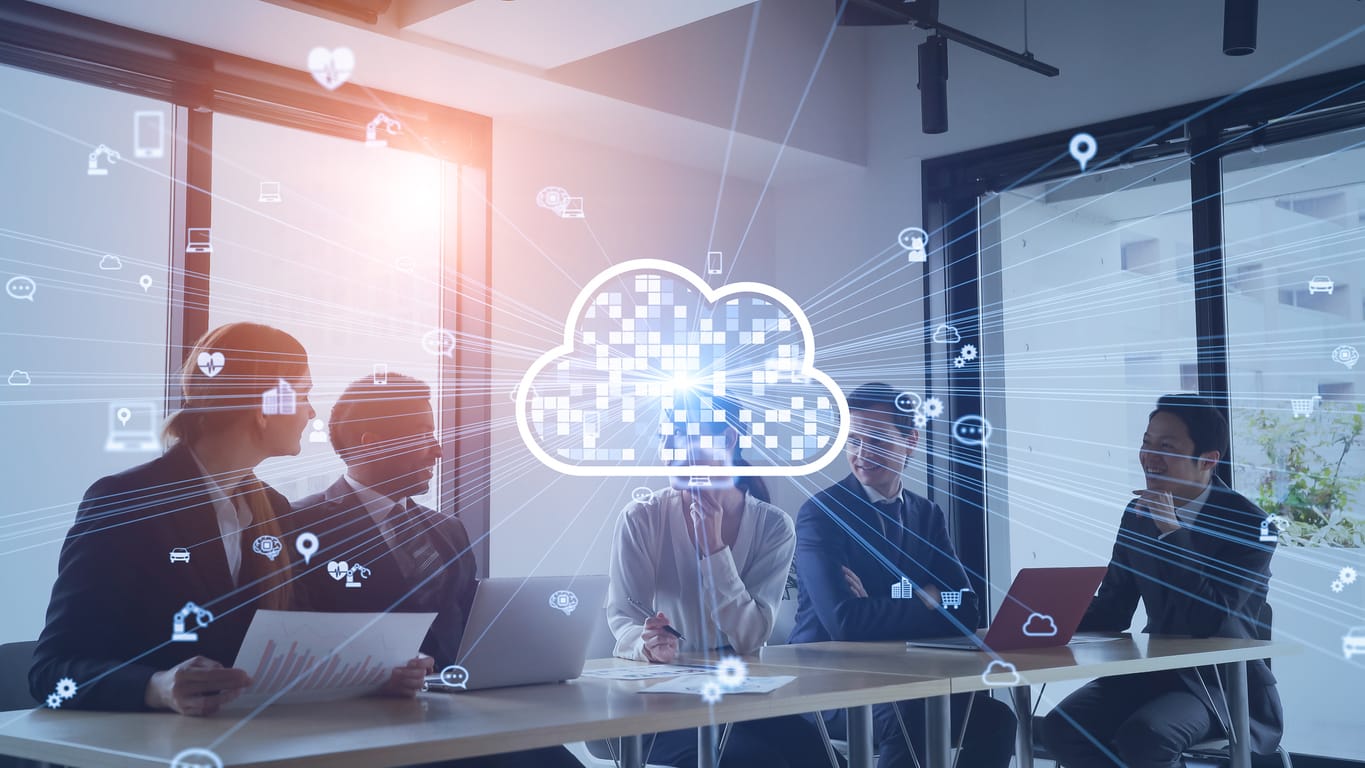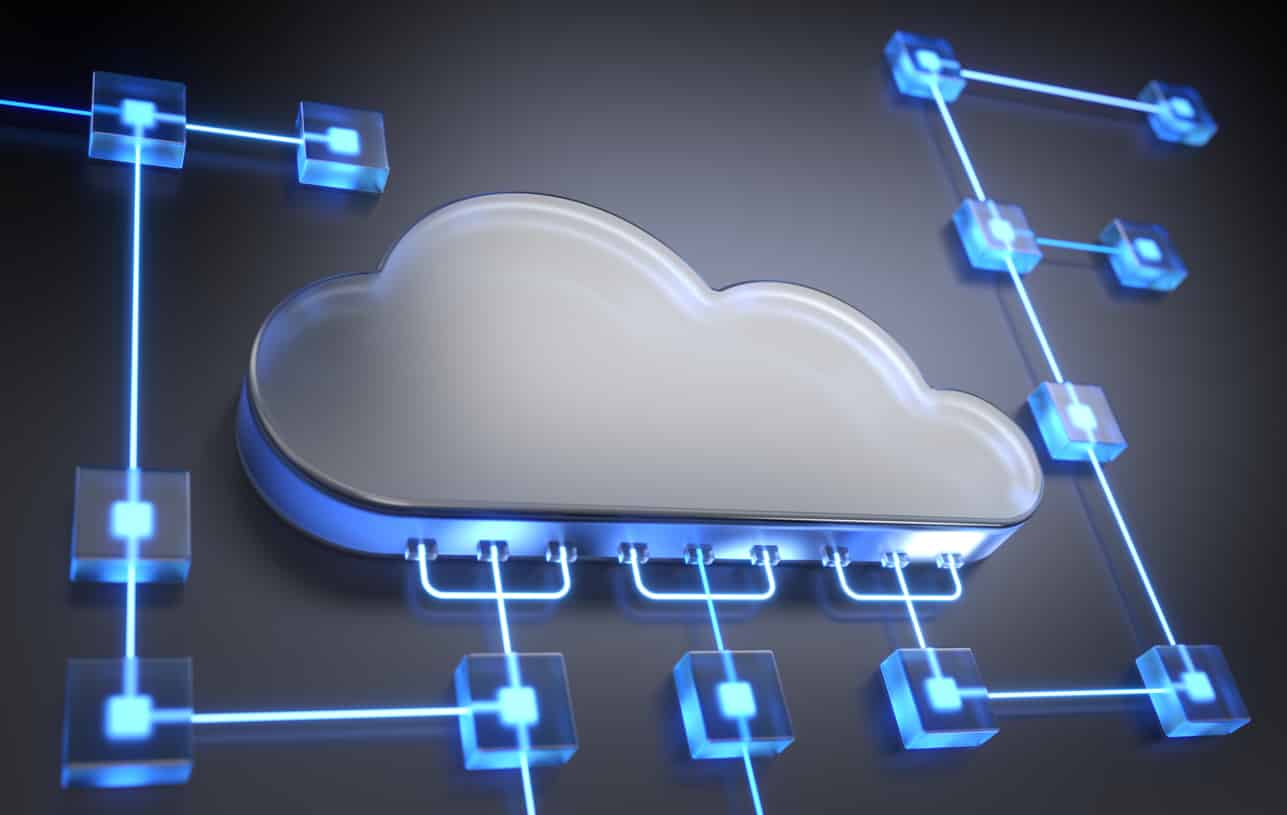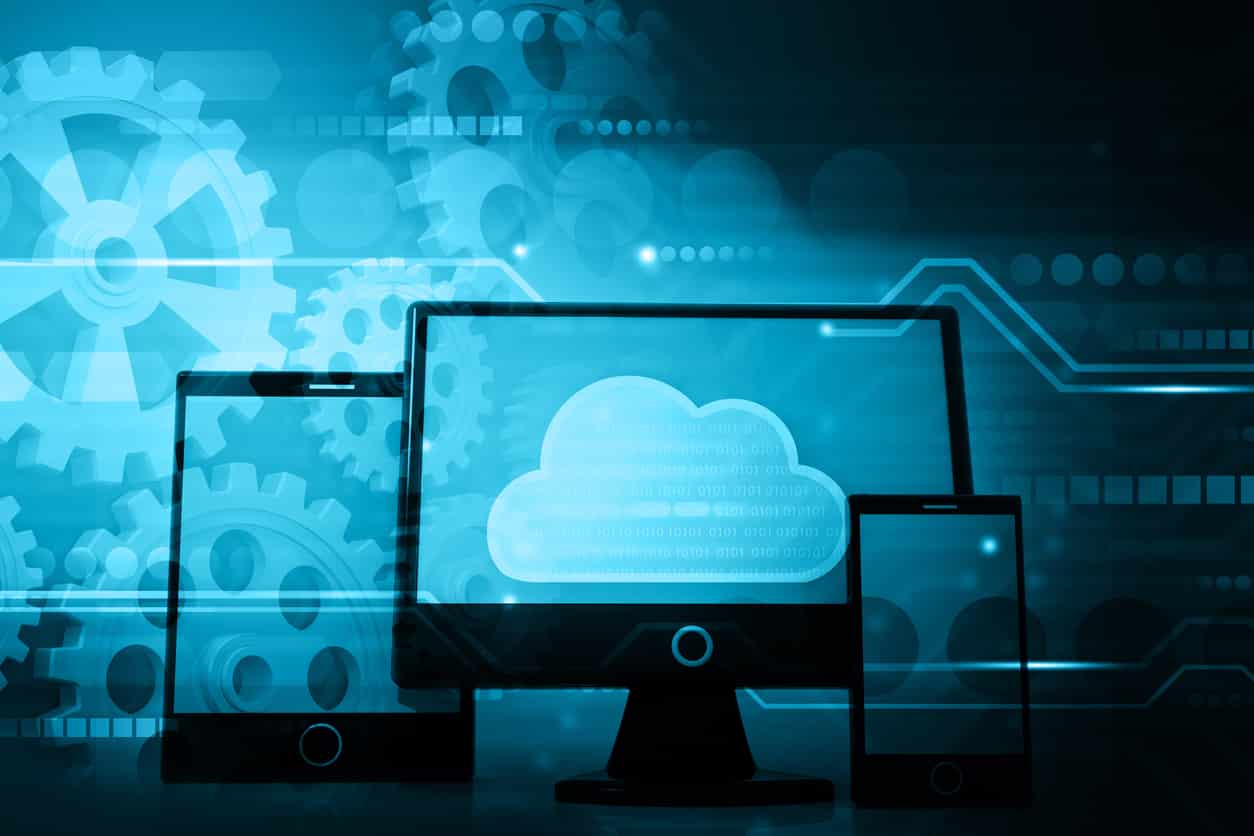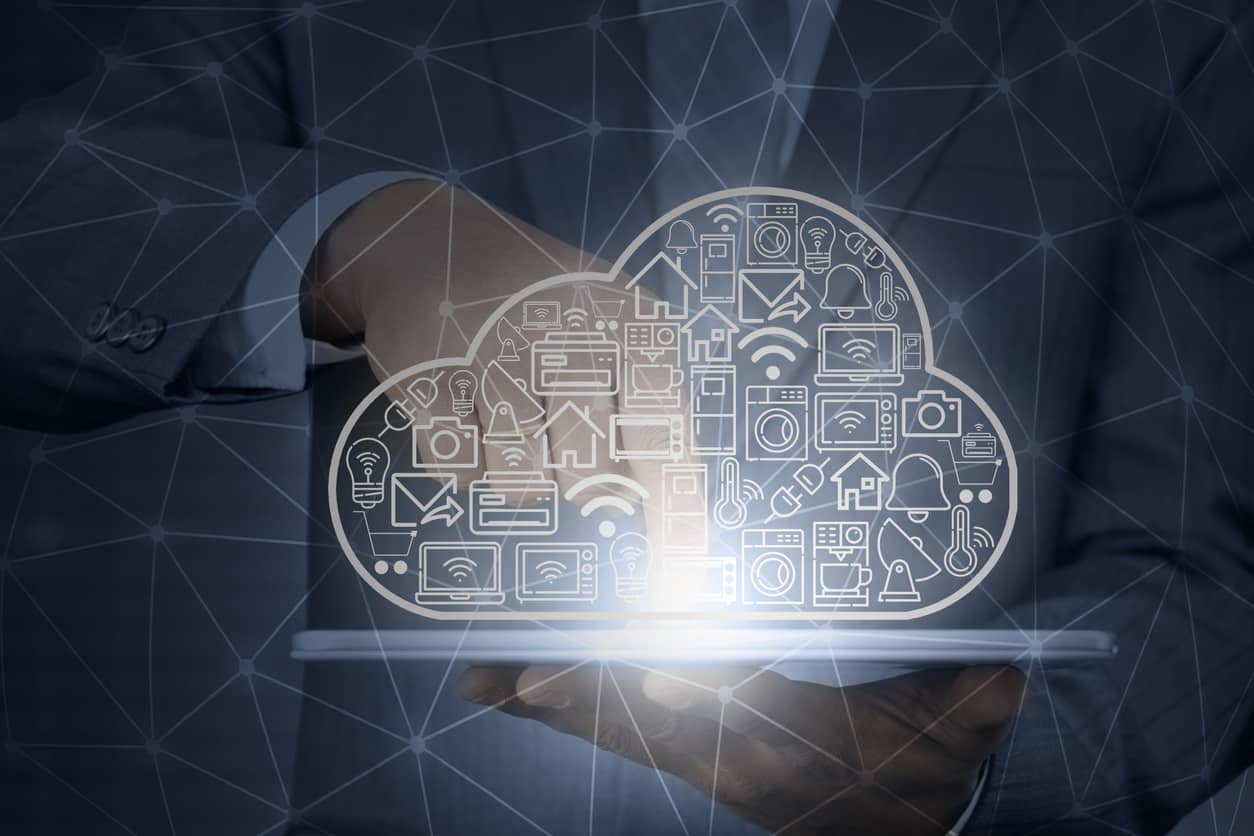AWS or Amazon Web Services is a Cloud Computing services platform offered by Amazon. There are various services offered by AWS and it lets you build, test, and deploy services. According to a recent report by LinkedIn, close to 60% of cloud computing jobs require AWS as a skill. Thus, upskilling with an AWS Course and preparing with the help of AWS Interview Questions can help you land your dream job. In this blog, we’ll cover AWS Interview Questions from the basics concepts to coding questions. Stay tuned!
AWS Basic Interview Questions
1. Explain the term AWS.
AWS stands for Amazon Web Services, is a cloud service platform provided by Amazon which is capable of serving the need for on-demand computational services, databases, storage space and offers flexible, reliable, scalable, easy-to-use, and cost-effective solutions. The various services provided by AWS are not limited to a particular country, continent, or time zone. Any business that is ready to pay can use AWS services for their day-to-day business needs. Amazon has worked and invested in this project, which is developed by combining SaaS or software as a service, IaaS or infrastructure as a service, and PaaS or platform as a service.
AWS is a combination of several products and services associated with cloud computing on an individual level.
2. Are you aware of the different services provided by AWS?
Yes, the following are the services provided by AWS:
- Compute
- Migration
- Data management
- Governance
- Security
- Monitoring
- Storage databases
- Networking
- Big data management
- Artificial intelligence
- Analytics
- Mobile development
- Hybrid cloud
3. Explain Amazon EC2.
The OS Level control is provided by the Virtual Machine “EC2“, the respective virtual machine is stored in the cloud. The cloud server can be executed on your demand, providing you with total control over the deployment of the server, and can be used to execute your own cloud servers. They can be compared to your on-premise servers. The user has the desired control over the hardware that they want to use and also can decide when to update the software on the machines.
4. What do you understand about the term “CloudWatch”?
There are various different AWS environments, for example, RDS Instances, EC2, CPU utilization which require proper monitoring for their smooth functioning. CloudWatch is the application that is used for the monitoring of above stated AWS environments. When the metrics that are set at some particular values are disturbed, cloud watch informs the system by triggering alarms.
5. What do you understand about the term “SnowBall”?
There is a huge exchange of information (data) from and to the AWS environment. An application is required for enabling the flow of terabytes of data, and Snowball is the application that is used for the above-stated purpose.
6. What do you understand about the term “VPC”?
Customization is a very important feature of modern technologies. Being able to easily customize your network provides an extra edge over another network system. With the help of VPC, or also known as Virtual Private Cloud, customization of network configuration is possible. Features such as Private IP address range, internet gateways, security groups are provided by VPC, as it is a network that is logically designed to be isolated from other networks that are present in the cloud.
7. Name the storage classes available in Amazon S3.
Following are the storage classes that are available in Amazon S3:
- Amazon S3 Standard
- Amazon S3 Standard-Infrequent Access
- Amazon S3 Reduced Redundancy Storage
- Amazon Glacier
8. What do you understand about T2 instances?
Depending upon the performance demanded by the workload, T2 instances either provide moderate performance or provide the ability to achieve higher performance.
9. What do you understand about the Key-Pairs in AWS?
It is important to secure your virtual machines to protect your network system from threats. The need to provide a security code before logging into your network configuration is a very good way to protect your configuration. Key-Pairs, also known as secure login information, provide a way to connect to your instances safely. A Public key and a Private key are usually contained in a Key-Pairs.
10. For a VPC, what are the number of subnets you can have?
The number of subnets per VPC is 200.
11. Name the different types of Cloud Services available.
Following are the Cloud Services
- Software as a Service (SaaS)
- Data as a Service (DaaS)
- Platform as a Service (PaaS)
- Infrastructure as a Service (IaaS)
AWS Solution Architect Interview Questions
12. Explain the Security Practices that are implemented by Amazon for EC2.
It is a healthy habit to develop and implement security practices:
- When there is a need to access the AWS reduces it is advised to use Identity and Access Management (IAM).
- Also, it is considered a safe option to allow access to ports on an instance to only trusted hosts or networks to eliminate any potential threats or breaches.
- When there is a need to give access to any permission, make sure permissions are given only to those who require it.
- It is important to understand the potential risk that password-based logins carry. Always make sure password-based logins are disabled to prevent any misuse of your important login information.
13. What do you understand about Amazon S3?
S3 stands for Simple Storage Service and is a storage support platform provided by Amazon. Amazon S3, object storage that is used to store data and also to retrieve the respective data (any amounts of it) independent of the location. It provides on-demand storage, which is unlimited and cost-effective. The durability is unmatched as the data is being stored in a secured facility, and the stored data is readily available, making it very easy to access the stored data from anywhere at any time. Also, cost optimization management, access control, and compliance become very easy and user-friendly with the help of Amazon S3.
14. Is there a possibility that Amazon S3 and EC2 Instances can be used under compatible conditions? If such a possibility exists, then explain.
Yes, Amazon S3 and EC2 instances can be used together. EC2 instances (root devices) should be backed in local instance storage. It is important because it allows the developers to access the storage infrastructure which is being used by Amazon for its websites (globally expanded network). The movement of Amazon Machine Images (AMIs) between Amazon S3 and Amazon EC2 instances can be possible by loading the Amazon Machine Images into the Amazon S3, which allows the developers to execute systems in the Amazon EC2 environment.
15. What are your thoughts on IAM? Why is it implemented?
IAM stands for Identity And Access Management, and it is basically a web-based service that is being used by the developers to access the AWS services in a secure manner. Developers can easily manage the number of users that can access the system. The implementation of IAM security has increased as various security features such as access keys and having the availability and the ability to provide the system access permissions to only those users that are approved by the administrator.
16. What do you understand about Amazon Route 53?
DNS or Domain Name System; Amazon Route 53 is a DNS. The availability of the respective DNS is appreciated, and it can be easily scaled. Port 53 is TCP or UDP port, and such ports are usually used to address the requests that are made by the Domain Name System servers.
17. Explain about the term CloudTrail. Also, explain the working of Cloudtrail with Route 53.
There are many requests that are made by an AWS account and also by the IAM users. It is important to properly collect the data regarding each request for the proper functioning of the system. Cloudtrail is the appointed service that is responsible for collecting the information and the important data related to each request made by the respective account. These requests are received by the Amazon Route 53 API. The requests are assisted with their respective log files that are stored by Cloudtrail in the Amazon S3 bucket. Identification of the requests that are made to Amazon Route 53 can be made with the help of Cloudtrail log files. Information such as the IP address used to make the requests, the account through which the requests were made, the time when the request was made, etc., can be obtained systematically.
18. Explain a situation in which Standard Rds storage will be more useful than Provisioned IOPS.
Such a situation can arise when workloads are batch-oriented. One of the main features of no provisioned IOPS is that they have the ability to deliver high IO rates without any need for manual operations. However, the fact that they are expensive can also not be ignored.
19. What are the differences between Amazon Rds, Dynamodb, and Redshift? Explain briefly.
Dealing of data can be done in structured data and unstructured data, and there are different database management services available for both. It is important to identify the data structure and choose the most appropriate data services for the management of the respective data structure. Amazon Rds, a database management service, is mainly used for relational databases. It is mostly implemented for patching and upgrading databases; also, backups of the databases are created automatically. But, Amazon Rds is a database management service for structured data only. DynamoDB, a NoSQL database service, is used to deal with unstructured data. And to easily analyze the data, Redshift, a data warehouse product, is used.
Also Read- AWS Management Console: All You Need To Know
20. Explain the importance of AWS’s Disaster Recovery.
To eliminate the cost and need of any second physical site, businesses in the current market scenarios are relying on cloud computing for recovering critical IT systems. Cloud computing offers faster disaster recovery. There are different levels of systems recovery architectures such as small customer workload, rapid failover at scale, etc. One of the most interesting things about AWS’s Disaster Recovery is that it provides rapid recovery, which is possible due to the presence of Amazon’s data centers worldwide.
AWS Lambda Interview Questions
21. What do you understand about AWS Lambda?
AWS Lambda, a serverless computing service, is regarded as one of the best services a developer can choose to run their codes by eliminating the need to manage any servers or provisioning. Lambda is a paid service and charges you only when you are making use of the computing time. It allows you to run the codes, and these codes can be of any application or any backend service. While running the codes, no administration is required. The process is to first upload the codes on the lambda server, and the remaining steps are taken care of by it. One of the most important features is that the lambda, while executing the code, automatically scales the respective code with respect to availability. The respective code can be fed into the system and be triggered with the help of any other AWS available, or mobile apps or web can also be used for the same purpose.
22. Are you aware of the restrictions that are applied to AWS Lambda function code?
In general, there are not many restrictions that are imposed by Lambda on the OS activities and standard languages. But some activities such as inbound network connections and trace calls, being an important debugging system, and also TCP port 25 traffic, implemented to measure anti-spam are disabled by Lambda. IP/TCP sockets support outbound connections.
23. What is the average time taken by a Lambda function to execute?
When the call is made to AWS Lambda, the process starts and can take 1 to 300 seconds to execute completely. The default timeout value is set to 3 seconds, but the respective value can be changed, and any value between 1 to 300 can be assigned.
24. Is AWS Lambda safe to use? How does Lambda protect one’s code?
Yes, Lambda is safe to use. When the code is fed into the system, Lambda first encrypts the code and then stores it into Amazon S3 when the respective code is resting. Also, when the code is in the execution stage, Lambda goes an extra step and provides the code with an additional integrity check.
25. Does AWS Lambda offer the ability to run different types of codes?
There are many different activities that can be done with the help of AWS Lambda. Developers can make use of AWS Lambda to work on backends for mobile applications, where retrieving and transforming data can be done with the help of Amazon Dynamo S3. To transform and compress objects, handlers can be used as they are uploaded to Amazon S3, the streamed data can be processed eliminating the requirements of any server with the help of Amazon Kinesis, API calls that are made to the web services of Amazon can be reported and audited, and many more activities can be performed with the help of AWS Lambda.
26. What do you understand about the term “Auto Scaling”?
Novel instances can be configured automatically with the help of Auto Scaling, and it is one of the most important features that is provided by the web services of Amazon. The process requires no human intervention, and the developer can use the threshold to monitor the metrics. The threshold has to be crossed in order to enable the instances and the tasks (if increased horizontally).
27. Name a few languages that are supported by AWS Lambda.
Following are the languages that are supported by AWS Lambda:
- Python
- C# (.net core)
- Node.js (JavaScript)
- Java (Java 8 compatibility)
- Go
These codes can also include the existing and the native libraries.
28. Is there any way to access the infrastructure on which the AWS Lambda operates?
The main system on which the AWS Lambda operates cannot be accessed. The system is used by AWS Lambda for implementing security protocols, running health checks, and performing other routine checks.
29. Is there a way to automate a serverless application?
AWS CodeDeploy and AWS CodePipeline can be used to automate the serverless application release process. CodePipeline takes care of various stages of automation such as modeling, visualizing, etc. The developers are provided with a delivery service for their serverless application. CodeDeploy, a deployment-based service, is equipped with an engine that carries the automation process for the Lambda-based application. They practice canary and linear forms of deployment, making them one of the best services to rely on for one’s serverless application automation. They also guide you through the process of securing the newly deployed serverless application by providing various different security barriers. Such measures provide security and ensure the stability of the serverless application.
AWS Cloud Interview Questions
30. What do you understand about Cloud Computing? Explain in simple words.
Manipulating, configuring, and accessing the hardware and software resources remotely is known as cloud computing. It provides much-needed online data storage, usable infrastructure, and application. Software is not required to be installed locally on the pc because of which there is platform independence. Business applications are becoming mobile and collaborative due to cloud computing. The customer pays only for the cloud services, which helps in lowering the operating costs, and the infrastructure can be used more efficiently.
31. What are the different types of Cloud Computing?
In order to satisfy various needs several different models, types, and services have been developed. The three ways that can opt to deploy cloud services are
- Public Cloud
- Private Cloud
- Hybrid Cloud
32. In your knowledge, what do you mean by a Public Cloud?
Public Cloud: They are used and implemented by (third-party) cloud service providers, which deliver their computing resources like servers and storage over the internet. The hardware, software, and other supporting infrastructure is owned and managed by the cloud provider hence providing customers with more time to expand their business. The customer can access these services and manage the account using a web browser.
33. To your knowledge, what do you mean by a Private Cloud?
Private Cloud: They refer to cloud computing resources used exclusively by a single business or organization. They are easily located on the company’s on-site data center (a short amount of time), but in some cases, companies also pay third-party service providers to host their private cloud. The services, applications, data, and infrastructure are maintained on a private network.
34. In your knowledge, what do you mean by a Hybrid Cloud?
Hybrid Cloud: They combine public and private clouds and use the technologies that allow data and applications to be shared between them. Hybrid cloud provides more flexibility, more deployment options and helps optimize existing infrastructure, security, and compliance as it can allow the data to move between private and public clouds.
35. What are the different types of Cloud Services?
The cloud services are considered under mostly four broad categories: Infrastructure as a service (IaaS), Platform as a service (PaaS), Serverless Computing, and Software as a service (SaaS). They are also known as cloud computing stacks as they can be built on top of each other.
36. In your knowledge, what do you mean by Infrastructure as a service (IaaS)?
Infrastructure as a service (IaaS): It is the most basic category of cloud computing services. IT infrastructure such as servers and virtual machines (VMs), storage, networks, operating systems can be rented from a cloud provider on a pay-as-you-go basis by the customers.
37. To your knowledge, what do you mean by a Platform as a service (PaaS)?
Platform as a service (PaaS): It is a cloud computing service that supplies an on-demand environment for developing, testing, delivering, and managing software applications to customers. PaaS has a specially designed interface that makes it easier for customers to quickly create web or mobile apps without worrying about setting up or managing the underlying infrastructure of servers, storage, network, and databases needed for development.
38. Based on your knowledge, what do you mean by Serverless Computing?
Serverless computing: It focuses on building app functionality without spending time continually managing the servers and infrastructure required to do so. The cloud provider performs various actions like handling the setup, capacity planning, and server management for the customer. These architectures are highly scalable and event-driven and only use resources when a specific function or trigger occurs.
39. Based on your knowledge, what do you mean by Software as a service (SaaS)?
Software as a service (SaaS): It is a method for delivering software applications over the internet, on-demand, and typically on a subscription basis. The cloud providers host and manage the software application and underlying infrastructure and handle any maintenance, like software updates and security patching. The customer can connect to the application over the internet, usually with a web browser on their phone, tablet, or PC.
40. What are the advantages of AWS cloud services?
Following are the advantages of cloud computing:
- Flexibility: Due to the availability of new features and services in AWS, which are instant in nature, the organization is left with more time to work on core business tasks. As AWS in itself is a result of a complex integration of various software and hardware, it does not require learning new technologies or migrating new applications, because of which it provides advanced computing and efficient storage. AWS provides various options and allows the users to select whether to run the applications and services together or not.
- Cost-effectiveness: There is no upfront investment, long-term commitment, and minimum expense because of which the cost at which the services are provided are way cheaper than traditional IT infrastructure that requires a huge investment
- Scalability/Elasticity: AWS provides services at a reduced cost, and also user satisfaction is increased as AWS techniques or models or solutions are well equipped to handle unpredictable situations or deal with very high loads of work. This technique is known as the elastic load balancing technique. Depending on the demand, these balancing techniques are scaled up when demand increases and scaled-down when demand decreases.
- Security: End-to-end security and privacy are provided to customers by AWS services. The operations of AWS are managed under full privacy and isolation, which ensures the three aspects of security, i.e., Confidentiality, integrity, and availability of user’s data. Due to the amount of time that has been invested in strengthening the security of AWS centers by Amazon, the customers can expect a high level of physical security.
41. How can customers use AWS services?
Customers can use the services provided by AWS by paying for the services that satisfy their respective needs and motives.
The services that the customers can pay for are as follows:
- Computing
- Programming models
- Database storage
- Networking
AWS VPC Interview Questions
42. Is there a way to connect multiple sites to a VPC?
Yes, multiple sites can be connected to a VPC. If there are multiple VPN connections available, AWS VPN CloudHub can be used to establish a secure connection among the different sites.
43. What are the security features and products that are offered by VPC?
Following are the list of security features and products that are being offered by VPC:
It is very important to secure the EC2 instances, and security groups are implemented by the developers to provide a firewall to the respective instances, and also they can be used to control the inbound and outbound traffic (level of instances).
Subnets are a crucial part of the system, and they can be protected with the help of Network access control lists. Network access control lists are deployed by the developers to provide a firewall for the submets, and also they can be used to control the inbound and the outbound traffic (level of subnets).
To collect the states of inbound and outbound traffic of the network interfaces in a respective VPC, Flow logs are used.
44. Is there a tool that can be used to monitor Amazon VPC?
Yes, there are tools available that can be used to monitor Amazon VPC such as CloudWatch and CouldWatch logs, and also VLC Flow Logs
AWS DevOps Interview Questions
45. What do you know about AWS DevOps?
DevOps practices can be easily executed with the help of Amazon’s cloud service platform. The availability of a wide variety of tools assists the developers to automate manual tasks, which results in increasing the speed and efficiency of the process.
46. What is the need for DevOps and Cloud Computing?
The two main actions of DevOps practices are Development and Operations. Both Agile development and Cloud Computing work together to create strategies and build solutions that are capable of bringing positive changes in business processes and adaptability. They both are dependent on each other.
Are you interested in pursuing a career in Cloud Computing? Check out Post Graduation in Cloud Computing.
47. Why do we need AWS for DevOps?
Following are the reason why the need for AWS is important for DevOps:
- AWS eliminates the need for any hardware and software. Meaning they need to first build your hardware, then search for appropriate software, and then follow written steps for the setups, and various installations are eliminated. AWS provides ready-to-use services.
- There are no restrictions for the use of computer resources, and users can easily scale up without the need to worry about the resources.
- The transparency and pay-as-you-go policy practiced by AWS provides the users with a detailed breakdown of the investment made by them. This helps the users to keep track of their budget and make sure that they earn a significant profit on their investment.
- AWS automation is one of the main reasons why the process of developing, deploying, and testing various different services or applications is improved. It is now time-efficient and requires fewer resources.
- SDKs and APIs can be used for command-line interface to working in AWS services, making them easily programmable and user-friendly.
48. What do you understand about CodePipeline in AWS DevOps?
Users wanting integration and delivery services on a regular basis can opt for CodePipeline, which is a service being offered by AWS. Developers are also provided with constant infrastructure updates. Various different operations that are important for a well-structured build, such as developing, deploying, and testing, are simplified for the developers by CodePipeline, as the developers are allowed to model and customize the set release of protocols. CodePipeline makes sure that you are able to deploy new software upgrades or updates and various new features at a faster rate.
49. What do you understand about CodeBuild in AWS DevOps?
The various software packages (ready to deploy) require different actions such as compilation of source code, testing, and production processes to be completed before the final deployment of the package. Developers can make use of CodeBuild provided by AWS to complete the above-mentioned actions in a short amount of time. CodeBuild is a service fully managed by AWS. The need for managing, allocating, or provinsing with respect to the scale of build servers is eliminated as the respective actions are automatically performed by CodeBuild. The biggest disadvantage of waiting for the completion of the build operations is also eliminated by CodeBuild. The build operations are executed simultaneously in the servers.
50. What do you understand about CodeDeploy in AWS DevOps?
Before the introduction of CodeDeploy, deployment codes of instances were done manually, making it the process to consume more time for completion. The introduction of CodeDeploy, which is a service provided by AWS, automates the deployment of code to any instances, reducing the completion time of the process. These instances can be local servers or Amazon’s EC2 instances. While updating an application, there are many complexities faced by developers, and these problems are taken care of by CodeDeploy. It exponentially decreases the time required for the process of updating and deploying the updated application, hence providing developers with better results in a short amount of time.
51. What do you understand about CodeStar in AWS DevOps?
CodeStar, a service provided by AWS, is one of the most popular services that is being used by the developers as CodeStar takes care of all the activities that are involved in software development, from the build operations of the application to the deployment of the updated application. Developers can easily track their activities and properly manage their operations and deployment stats. Such efficient features reduce the time taken in software development. CodeStar provides a continuous delivery pipeline that helps the developers to release their new updates in a short period of time.
52. State the uses of Amazon Elastic Container Service (ECS) in AWS DevOps?
With the help of Amazon Container Service (ECS), docker containers can be easily integrated. ECS is a management service provided by AWS for container management. It provides high-performance results. Developers can use the managed cluster to execute the application on the EC2 instances.
53. Explain the configuration of a building project in AWS DevOps.
The command-line interface is used to configure the building project. Developers can make use of the CLI to run the build making the process easy.
54. Explain Microservices in AWS DevOps?
Microservices, as the name suggests, is a design architecture in which the application is structured as a set of services. These services have an independent process structure. Each service can communicate with the other service by making use of a structured interface. The respective interface is user-friendly and is light in weight. HTTP and API requests are used for the process of communication between the different services.
AWS Glue Interview Questions
55. Explain AWS Glue?
There are various functions that require categorizing the data, cleaning it, and moving it between different data stores and data streams. SWA Glue Catalog is a metadata (central) repository. Python and Scala codes are generated using AWS Glue. Serverless infrastructure is used for setting up or managing. Data can be organized (rows and columns) with the help of Apache Spark data frame and the data frame abstraction.
56. Name a few features of AWS Glue?
Following are the features of AWS Glue.
- The scheme-related information and the relevant data can be stored in the data catalog with the help of Automatic Schema Discovery. It is very important as the information gets stored in a well-structured manner, making the system more efficient.
- There are many situations in which many jobs are opened in parallel, and Job Scheduler allows the developers to assign the dependencies to their respective jobs.
- Developers can also create their own readers, write their own codes and carry out any transformations they like with the help of Develop Endpoints.
- Generating codes becomes very easy as Automatic Code Generations allow automatic code generation.
- When there is a need to store data in the pipeline (AWS), sharing the data from a different source Integrated Data Catalog is used.
57. Explain about the use cases of AWS Glue.
Following are the use cases of AWS Glue:
When there is a need to extract the required data in different formats, Data extraction is used.
In cases when the data is reformatted for data storage, data transformation is the best tool to go for.
While integrating the data or the information, a data integration tool is the best choice as it allows the data lakes and warehouses to properly integrate the respective data.
58. Explain the steps to execute AWS Glue scripts using Python 2.7 from a local machine.
Following is the code for executing am AWS glue script using Python 2.7 from a local machine:
import sys
from awsglue.transforms import *
from awsglue.utils import getResolvedOptions
from pyspark.context import SparkContext
from awsglue.context import GlueContext
from awsglue.job import Job
glueContext = GlueContext(SparkContext.getOrCreate())
persons = glueContext.create_dynamic_frame.from_catalog(
database="tables",
table_name="tablestables_converted_json")
print "Number: ", persons.number()
persons.printSchema()
59. Write the code to set the name for the crawled table.
Following is the code to set a name for the crawled table:
import boto3
database_name = "database"
table_name = "prefix-dir_Table"
new_table_name = "New_Table"
client = boto3.client("glue")
response =client.get_table(DatabaseName=database_name, Name=table_name)
table_input = response["Table"]
table_input["Name"] = new_table_name
#Following are the deleted keys that cause create_table to fail
table_input.pop("CreatedBy")
table_input.pop("CreateTime")
table_input.pop("UpdateTime")
client.create_table(DatabaseName=database_name, TableInput=table_input)
60. Write the code to specify join types in AWS Glue?
Following is the code to specify join types in AWS Glue:
cUser0=glueContext.create_dynamic_frame.from_catalog(database="captains",table_name="cp_txn_winds_karyakarta_users", transformation_ctx = "cUser")
cUser0DF = cUser0.toDF()
cKKR=glueContext.create_dynamic_frame.from_catalog(database="captains",table_name="cp_txn_winds_karyakarta_karyakartas",redshift_tmp_dir=args["TempDir"],transformation_ctx="cKKR")
cKKRDF = cKKR.toDF()
dataSource0 = cUser0DF.join(cKKRDF, cUser0DF.id== cKKRDF.user_id,how='left_outer')
This brings us to the end of the blog on AWS Interview Questions. We hope that you are now better equipped to attend your upcoming interviews. All the best!





